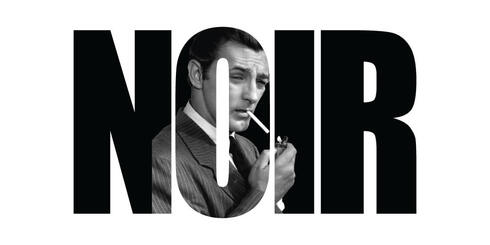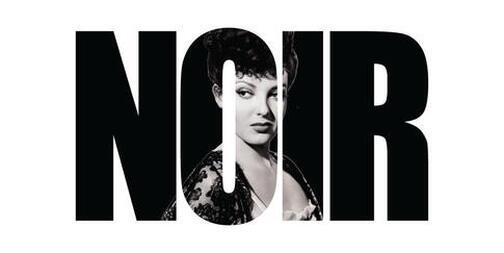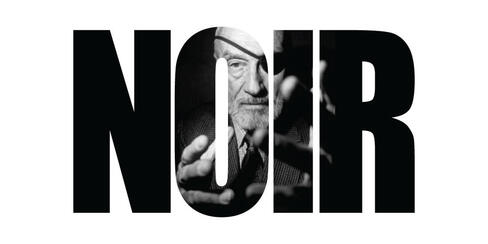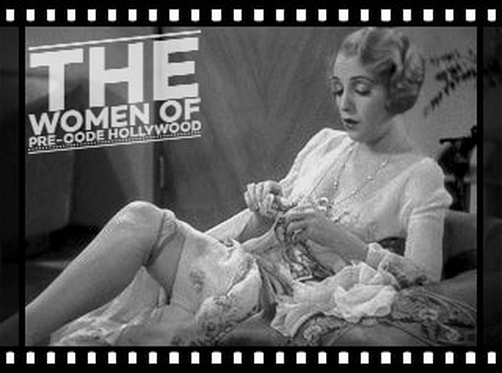BETTE DAVIS
AND FILM NOIR
Bette Davis made a significant impact on the film noir genre through her versatile performances and her ability to embody complex and morally ambiguous characters. While Davis is often associated with her iconic roles in melodramas and women's pictures, she also contributed to the dark and atmospheric world of film noir with her exceptional acting skills.
Davis had a unique ability to bring depth and complexity to her characters, whether they were heroes, anti-heroes, or villains. She had a commanding presence on screen and could portray a range of emotions, from vulnerability to steely determination. These qualities made her well-suited for the intricate and psychologically-driven narratives often found in film noir.
One of Davis's notable film noir roles was in "The Letter" (1940), directed by William Wyler. In this adaptation of the play by W. Somerset Maugham, she played Leslie Crosbie, a woman who commits murder and tries to cover up her crime. Davis delivered a gripping performance, capturing the morally ambiguous nature of her character and the tension that permeated the film.
Another standout film noir performance by Davis was in "Beyond the Forest" (1949), directed by King Vidor. In this film, she played Rosa Moline, a discontented small-town woman trapped in an unhappy marriage. Davis's portrayal of Rosa was intense and layered, showcasing the character's desperation and self-destructive tendencies.
Davis's impact on film noir extended beyond individual performances. Her reputation as a fearless actress willing to take on challenging roles helped legitimize the genre and draw attention to its unique storytelling style. She brought a sense of complexity and authenticity to her portrayals, elevating the overall quality and artistic value of film noir.
Furthermore, Davis's influence on subsequent generations of actresses cannot be overstated. Many actresses who followed in her footsteps, including those who became prominent in the film noir era, were inspired by her boldness, intensity, and willingness to take risks. Her performances in film noir served as a benchmark for future portrayals of complex female characters in the genre.
In summary, Bette Davis's impact on film noir can be attributed to her exceptional talent, her ability to embody morally complex characters, and her dedication to delivering powerful performances. She helped shape the genre through her on-screen presence, influencing both the style and substance of film noir. Davis's contributions remain an important part of the film noir canon, and her legacy as a remarkable actress continues to resonate with audiences today.
Davis had a unique ability to bring depth and complexity to her characters, whether they were heroes, anti-heroes, or villains. She had a commanding presence on screen and could portray a range of emotions, from vulnerability to steely determination. These qualities made her well-suited for the intricate and psychologically-driven narratives often found in film noir.
One of Davis's notable film noir roles was in "The Letter" (1940), directed by William Wyler. In this adaptation of the play by W. Somerset Maugham, she played Leslie Crosbie, a woman who commits murder and tries to cover up her crime. Davis delivered a gripping performance, capturing the morally ambiguous nature of her character and the tension that permeated the film.
Another standout film noir performance by Davis was in "Beyond the Forest" (1949), directed by King Vidor. In this film, she played Rosa Moline, a discontented small-town woman trapped in an unhappy marriage. Davis's portrayal of Rosa was intense and layered, showcasing the character's desperation and self-destructive tendencies.
Davis's impact on film noir extended beyond individual performances. Her reputation as a fearless actress willing to take on challenging roles helped legitimize the genre and draw attention to its unique storytelling style. She brought a sense of complexity and authenticity to her portrayals, elevating the overall quality and artistic value of film noir.
Furthermore, Davis's influence on subsequent generations of actresses cannot be overstated. Many actresses who followed in her footsteps, including those who became prominent in the film noir era, were inspired by her boldness, intensity, and willingness to take risks. Her performances in film noir served as a benchmark for future portrayals of complex female characters in the genre.
In summary, Bette Davis's impact on film noir can be attributed to her exceptional talent, her ability to embody morally complex characters, and her dedication to delivering powerful performances. She helped shape the genre through her on-screen presence, influencing both the style and substance of film noir. Davis's contributions remain an important part of the film noir canon, and her legacy as a remarkable actress continues to resonate with audiences today.
AVAILABLE FILMS:
20,000 YEARS IN SING SING (1933)
ALL ABOUT EVE (1950)
ANOTHER MAN'S POISON (1951)
BAD SISTER, THE (1931)
BIG SHAKEDOWN, THE (1934)
BORDERTOWN (1935)
BUREAU OF MISSING PERSONS (1933)
CATERED AFFAIR, THE (1956)
DANGEROUS (1935)
DEAD RINGER (1964)
DECEPTION (1946)
EX-LADY (1933)
FOG OVER FRISCO (1934)
FRONT PAGE WOMAN (1935)
GIRL FROM 10TH AVENUE, THE (1935)
GREAT LIE, THE (1941)
HELL'S HOUSE (1932)
HOLLYWOOD CANTEEN (1944)
JEZEBEL (1938)
JIMMY THE GENT (1934)
JUAREZ (1939)
JUNE BRIDE (1948)
KID GALAHAD (1937)
LETTER, THE (1940)
LITTLE FOXES, THE (1941)
MAN WHO CAME TO DINNER, THE (1941)
MAN WHO PLAYED GOD, THE (1932)
MARKED WOMAN (1937)
MENACE (1934)
OF HUMAN BONDAGE (1934)
OLD ACQUAINTANCE (1943)
PARACHUTE JUMPER (1933)
PAYMENT ON DEMAND (1951)
PETRIFIED FOREST, THE (1936)
PHONE CALL FROM A STRANGER (1952)
POCKETFUL OF MIRACLES (1961)
SATAN MET A LADY (1936)
SCAPEGOAT, THE (1959)
SPECIAL AGENT (1935)
STAR, THE (1952)
STOLEN LIFE, A (1946)
THANK YOUR LUCKY STARS (1943)
THAT CERTAIN WOMAN (1937)
THREE ON A MATCH (1932)
WATCH ON THE RHINE (1943)
WATERLOO BRIDGE (1931)
ALL ABOUT EVE (1950)
ANOTHER MAN'S POISON (1951)
BAD SISTER, THE (1931)
BIG SHAKEDOWN, THE (1934)
BORDERTOWN (1935)
BUREAU OF MISSING PERSONS (1933)
CATERED AFFAIR, THE (1956)
DANGEROUS (1935)
DEAD RINGER (1964)
DECEPTION (1946)
EX-LADY (1933)
FOG OVER FRISCO (1934)
FRONT PAGE WOMAN (1935)
GIRL FROM 10TH AVENUE, THE (1935)
GREAT LIE, THE (1941)
HELL'S HOUSE (1932)
HOLLYWOOD CANTEEN (1944)
JEZEBEL (1938)
JIMMY THE GENT (1934)
JUAREZ (1939)
JUNE BRIDE (1948)
KID GALAHAD (1937)
LETTER, THE (1940)
LITTLE FOXES, THE (1941)
MAN WHO CAME TO DINNER, THE (1941)
MAN WHO PLAYED GOD, THE (1932)
MARKED WOMAN (1937)
MENACE (1934)
OF HUMAN BONDAGE (1934)
OLD ACQUAINTANCE (1943)
PARACHUTE JUMPER (1933)
PAYMENT ON DEMAND (1951)
PETRIFIED FOREST, THE (1936)
PHONE CALL FROM A STRANGER (1952)
POCKETFUL OF MIRACLES (1961)
SATAN MET A LADY (1936)
SCAPEGOAT, THE (1959)
SPECIAL AGENT (1935)
STAR, THE (1952)
STOLEN LIFE, A (1946)
THANK YOUR LUCKY STARS (1943)
THAT CERTAIN WOMAN (1937)
THREE ON A MATCH (1932)
WATCH ON THE RHINE (1943)
WATERLOO BRIDGE (1931)
VIDEO TRIBUTE:
Bette Davis
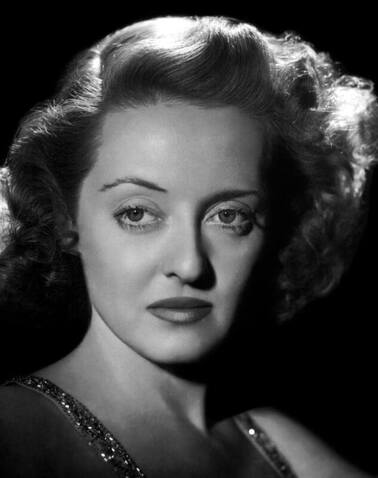
Bette Davis, born Ruth Elizabeth Davis on April 5, 1908, in Lowell, Massachusetts, was an American actress who became one of the most acclaimed and influential figures in the history of Hollywood. Known for her distinctive voice, intense performances, and strong-willed characters, Davis left an indelible mark on the film industry.
Davis began her acting career on Broadway in the late 1920s before making her way to Hollywood. She signed a contract with Universal Pictures in 1930 but struggled to find success initially. It wasn't until she moved to Warner Bros. in 1932 that her career gained traction.
Throughout the 1930s and 1940s, Davis became known for her portrayals of complex and independent women. She defied societal norms and challenged conventional beauty standards, earning a reputation for her strong-willed characters. Davis was known for her intense dedication to her craft, often delving deep into her roles and demanding creative control over her performances.
Some of Davis's most memorable films include "Of Human Bondage" (1934), "Jezebel" (1938), for which she won her first Academy Award for Best Actress, "Dark Victory" (1939), "The Letter" (1940), "The Little Foxes" (1941), and "Now, Voyager" (1942). Her performances in these films showcased her versatility and range as an actress, earning her critical acclaim and a devoted fan base.
Davis continued to deliver exceptional performances throughout the 1950s, 1960s, and beyond. Notable films from this period include "All About Eve" (1950), for which she received her second Academy Award for Best Actress, "Whatever Happened to Baby Jane?" (1962), "Hush...Hush, Sweet Charlotte" (1964), and "The Whales of August" (1987). Her later career was marked by various awards, honors, and memorable television appearances.
In total, Davis received ten Academy Award nominations, winning two for Best Actress. She also received numerous other accolades throughout her career, including several Emmy Awards and a Lifetime Achievement Award from the American Film Institute.
Bette Davis was not only a remarkable actress but also an influential figure in the industry. She challenged the status quo, fought for better roles for women, and inspired generations of actors with her dedication and talent. Her impact on cinema, her unforgettable performances, and her unwavering commitment to her craft solidify her place as one of the greatest actresses in the history of Hollywood. Davis passed away on October 6, 1989, leaving behind a rich and enduring legacy.
Davis began her acting career on Broadway in the late 1920s before making her way to Hollywood. She signed a contract with Universal Pictures in 1930 but struggled to find success initially. It wasn't until she moved to Warner Bros. in 1932 that her career gained traction.
Throughout the 1930s and 1940s, Davis became known for her portrayals of complex and independent women. She defied societal norms and challenged conventional beauty standards, earning a reputation for her strong-willed characters. Davis was known for her intense dedication to her craft, often delving deep into her roles and demanding creative control over her performances.
Some of Davis's most memorable films include "Of Human Bondage" (1934), "Jezebel" (1938), for which she won her first Academy Award for Best Actress, "Dark Victory" (1939), "The Letter" (1940), "The Little Foxes" (1941), and "Now, Voyager" (1942). Her performances in these films showcased her versatility and range as an actress, earning her critical acclaim and a devoted fan base.
Davis continued to deliver exceptional performances throughout the 1950s, 1960s, and beyond. Notable films from this period include "All About Eve" (1950), for which she received her second Academy Award for Best Actress, "Whatever Happened to Baby Jane?" (1962), "Hush...Hush, Sweet Charlotte" (1964), and "The Whales of August" (1987). Her later career was marked by various awards, honors, and memorable television appearances.
In total, Davis received ten Academy Award nominations, winning two for Best Actress. She also received numerous other accolades throughout her career, including several Emmy Awards and a Lifetime Achievement Award from the American Film Institute.
Bette Davis was not only a remarkable actress but also an influential figure in the industry. She challenged the status quo, fought for better roles for women, and inspired generations of actors with her dedication and talent. Her impact on cinema, her unforgettable performances, and her unwavering commitment to her craft solidify her place as one of the greatest actresses in the history of Hollywood. Davis passed away on October 6, 1989, leaving behind a rich and enduring legacy.
quotes:
"To fulfill a dream, to be allowed to sweat over lonely labor, to be given the chance to create, is the meat and potatoes of life."
"If Hollywood didn't work out, I was prepared to be the best secretary in the world."
"I certainly would have given anything to have worked with John Wayne. He's the most attractive man who ever walked the earth, I think."
- Bette Davis
trivia:
While she was the star pupil at John Murray Anderson's Dramatic School in New York, another of her classmates was sent home because she was "too shy". It was predicted that this girl would never make it as an actress. The girl was Lucille Ball.
When Bette learned that her new brother-in-law was a recovering alcoholic, she sent the couple a dozen cases of liquor for a wedding present.
Humphrey Bogart was in her first film Bad Sister, but Davis disliked him from the start, and nothing changed her opinion in later years, even when they did good work together.
She said the biggest mistake of her career was turning down the role of Blanche in the original stage production of A Streetcar Named Desire. She had just had her baby and didn't want to go to New York. Interestingly Vivien Leigh won the Oscar for this part as well as for another Bette "almost" role Gone With The Wind.
She thought Toys in the Attic by Lillian Hellman would have been the perfect vehicle for her and Katharine Hepburn.
Had a legendary feud with Joan Crawford which reached its nadir when she said, "The best time I ever had with Joan in a film was when I pushed her down the stairs in What ever happened to Baby Jane?"
In Marked Woman (1937), Davis is forced to testify in court after being worked over by some Mafia hoods. Disgusted with the tiny bandage supplied by the makeup department, she left the set, had her own doctor bandage her face more realistically, and refused to shoot the scene any other way.
After the song "Bette Davis Eyes" became a hit single, she wrote letters to singer Kim Carnes and songwriters Donna Weiss and Jackie DeShannon, asking how they knew so much about her. One of the reasons Davis loved the song is that her granddaughter heard it and thought it "cool" that her grandmother had a hit song written about her.
Joan Crawford and Davis had feuded for years. During the making of What Ever Happened to Baby Jane? (1962), Bette had a Coca-Cola machine installed on the set due to Crawford's affiliation with Pepsi (she was the widow of Pepsi's CEO). Joan got her revenge by putting weights in her pockets when Davis had to drag her across the floor during certain scenes.
Declined a role in 4 for Texas (1963) (which turned out to be a big hit) to do Dead Ringer (1964) (which turned out to be a big flop).
Had a long-running feud with Miriam Hopkins due to her affair with Hopkins' husband, director Anatole Litvak, as well as Davis' getting many roles that Hopkins wanted.
Played dual roles of twin sisters in two movies: A Stolen Life (1946) and Dead Ringer (1964).
She intimidated Marilyn Monroe so badly on the set of All About Eve that Monroe went into the bathroom to vomit after her scenes with Davis. After one particular scene Davis whispered to her other co-stars-- within poor Marilyn's hearing-- "That little blonde slut can't act her way out of a paper bag! She thinks if she wiggles her ass and coos away, she can carry her scene-- well, she can't!"
Was originally offered the role of Sandra Kovak, the hot-tempered talented pianist, in The Great Lie (1941). However Davis declined, instead giving the part to her good friend Mary Astor in order to take on the less showier role of Maggie Patterson as she knew that it would make Astor, whose career had not fully recovered due to the transition from silent films to "talkies", a huge star. Davis was right, as Astor went on to win the Best Supporting Actress Oscar for her performance.
When Bette learned that her new brother-in-law was a recovering alcoholic, she sent the couple a dozen cases of liquor for a wedding present.
Humphrey Bogart was in her first film Bad Sister, but Davis disliked him from the start, and nothing changed her opinion in later years, even when they did good work together.
She said the biggest mistake of her career was turning down the role of Blanche in the original stage production of A Streetcar Named Desire. She had just had her baby and didn't want to go to New York. Interestingly Vivien Leigh won the Oscar for this part as well as for another Bette "almost" role Gone With The Wind.
She thought Toys in the Attic by Lillian Hellman would have been the perfect vehicle for her and Katharine Hepburn.
Had a legendary feud with Joan Crawford which reached its nadir when she said, "The best time I ever had with Joan in a film was when I pushed her down the stairs in What ever happened to Baby Jane?"
In Marked Woman (1937), Davis is forced to testify in court after being worked over by some Mafia hoods. Disgusted with the tiny bandage supplied by the makeup department, she left the set, had her own doctor bandage her face more realistically, and refused to shoot the scene any other way.
After the song "Bette Davis Eyes" became a hit single, she wrote letters to singer Kim Carnes and songwriters Donna Weiss and Jackie DeShannon, asking how they knew so much about her. One of the reasons Davis loved the song is that her granddaughter heard it and thought it "cool" that her grandmother had a hit song written about her.
Joan Crawford and Davis had feuded for years. During the making of What Ever Happened to Baby Jane? (1962), Bette had a Coca-Cola machine installed on the set due to Crawford's affiliation with Pepsi (she was the widow of Pepsi's CEO). Joan got her revenge by putting weights in her pockets when Davis had to drag her across the floor during certain scenes.
Declined a role in 4 for Texas (1963) (which turned out to be a big hit) to do Dead Ringer (1964) (which turned out to be a big flop).
Had a long-running feud with Miriam Hopkins due to her affair with Hopkins' husband, director Anatole Litvak, as well as Davis' getting many roles that Hopkins wanted.
Played dual roles of twin sisters in two movies: A Stolen Life (1946) and Dead Ringer (1964).
She intimidated Marilyn Monroe so badly on the set of All About Eve that Monroe went into the bathroom to vomit after her scenes with Davis. After one particular scene Davis whispered to her other co-stars-- within poor Marilyn's hearing-- "That little blonde slut can't act her way out of a paper bag! She thinks if she wiggles her ass and coos away, she can carry her scene-- well, she can't!"
Was originally offered the role of Sandra Kovak, the hot-tempered talented pianist, in The Great Lie (1941). However Davis declined, instead giving the part to her good friend Mary Astor in order to take on the less showier role of Maggie Patterson as she knew that it would make Astor, whose career had not fully recovered due to the transition from silent films to "talkies", a huge star. Davis was right, as Astor went on to win the Best Supporting Actress Oscar for her performance.

